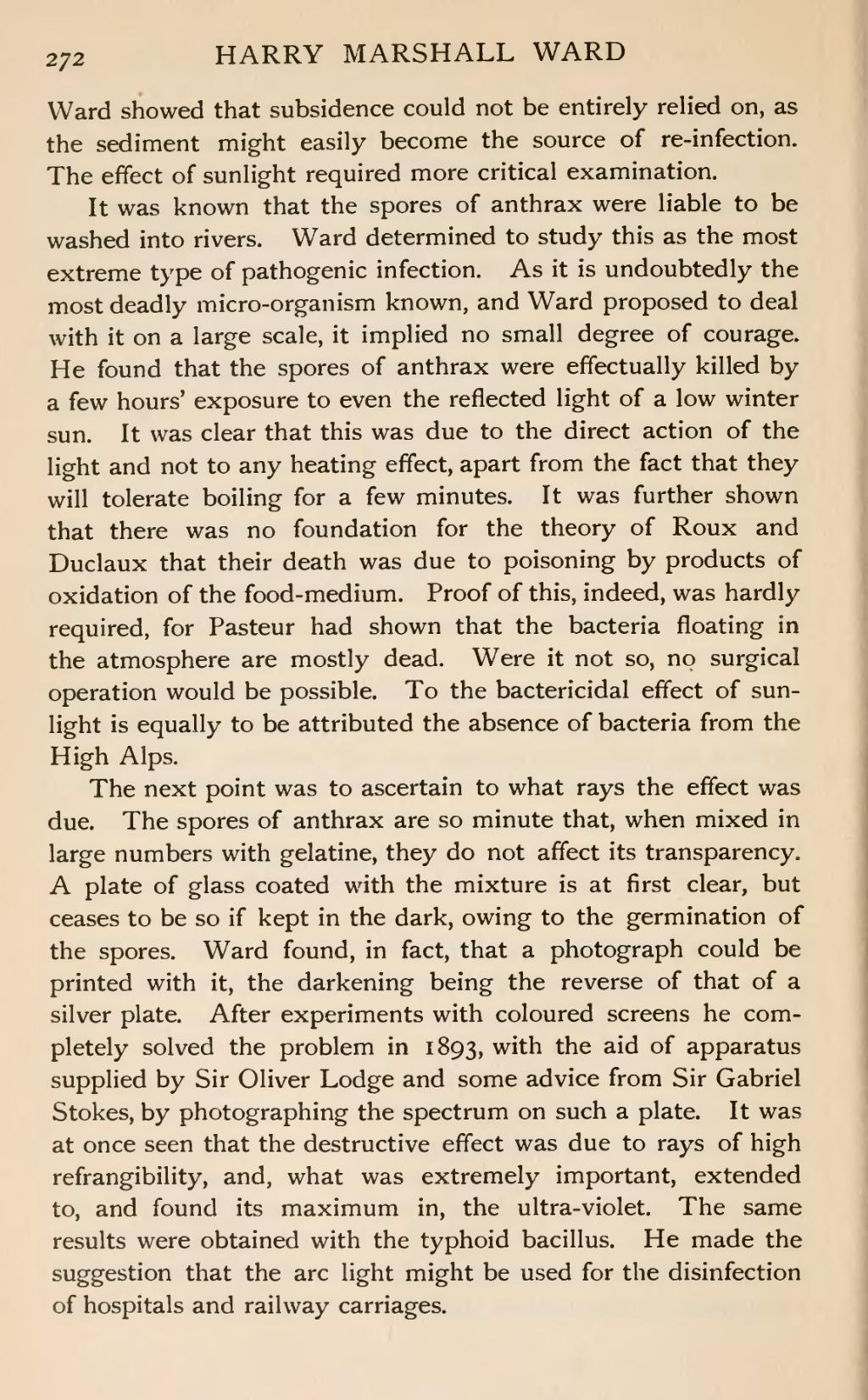Ward showed that subsidence could not be entirely relied on, as the sediment might easily become the source of re-infection. The effect of sunlight required more critical examination.
It was known that the spores of anthrax were liable to be washed into rivers. Ward determined to study this as the most extreme type of pathogenic infection. As it is undoubtedly the most deadly micro-organism known, and Ward proposed to deal with it on a large scale, it implied no small degree of courage. He found that the spores of anthrax were effectually killed by a few hours' exposure to even the reflected light of a low winter sun. It was clear that this was due to the direct action of the light and not to any heating effect, apart from the fact that they will tolerate boiling for a few minutes. It was further shown that there was no foundation for the theory of Roux and Duclaux that their death was due to poisoning by products of oxidation of the food-medium. Proof of this, indeed, was hardly required, for Pasteur had shown that the bacteria floating in the atmosphere are mostly dead. Were it not so, no surgical operation would be possible. To the bactericidal effect of sunlight is equally to be attributed the absence of bacteria from the High Alps.
The next point was to ascertain to what rays the effect was due. The spores of anthrax are so minute that, when mixed in large numbers with gelatine, they do not affect its transparency. A plate of glass coated with the mixture is at first clear, but ceases to be so if kept in the dark, owing to the germination of the spores. Ward found, in fact, that a photograph could be printed with it, the darkening being the reverse of that of a silver plate. After experiments with coloured screens he completely solved the problem in 1893, with the aid of apparatus supplied by Sir Oliver Lodge and some advice from Sir Gabriel Stokes, by photographing the spectrum on such a plate. It was at once seen that the destructive effect was due to rays of high refrangibility, and, what was extremely important, extended to, and found its maximum in, the ultra-violet. The same results were obtained with the typhoid bacillus. He made the suggestion that the arc light might be used for the disinfection of hospitals and railway carriages.
